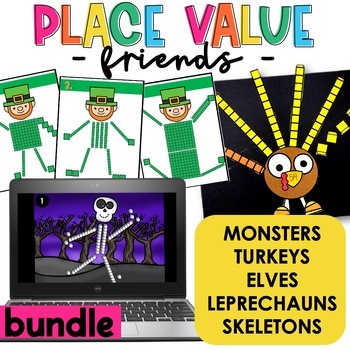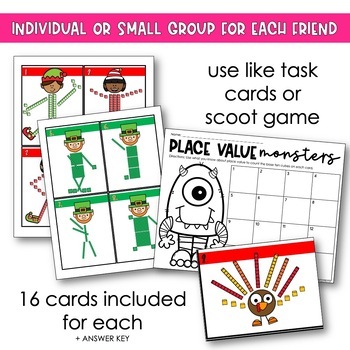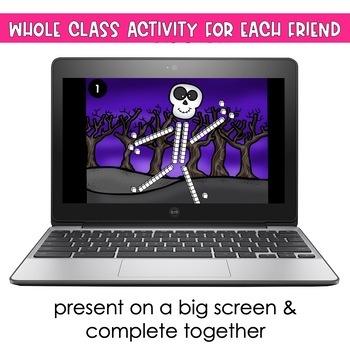Place Value Activities with Base Ten Blocks
Cupcakes n Curriculum
15.6k Followers
Grade Levels
1st - 3rd
Subjects
Resource Type
Standards
CCSS1.NBT.B.2
CCSS1.NBT.B.2a
CCSS1.NBT.B.2b
CCSS1.NBT.B.2c
CCSS2.NBT.A.1
Formats Included
- Zip
Pages
129 pages
Cupcakes n Curriculum
15.6k Followers
What educators are saying
My kids had fun making their own person/creature.
They were very creative in what they did.
After they created, they had to write the number that was reperesented by their creation.
It was a good way for me to see how well they were understanding place value.
My kids really enjoyed getting to work on math in a "fun" way! This resource helped clear any misconceptions within my classroom!
Products in this Bundle (7)
showing 1-5 of 7 products
Description
Place value practice, but make it fun! This bundled set of place value and base ten activities will engage your students in practice of counting base ten blocks to determine the total number. These place value activities can be used as individual, small group and whole class work. Perfect for math centers or math morning work, too!
Included in this resource:
- Place Value Monsters
- Place Value Skeletons (TWO versions!)
- Place Value Turkeys
- Place Value Elves (TWO versions!)
- Place Value Leprechauns
EACH of the above resources includes the following components:
- 16 place value task cards
- 1 PowerPoint presentation
- Recording sheet
- Answer Key
- Templates to create place value friend
Task Cards/Presentation
- Use the 16 place value task cards like task cards or Scoot. Place them around the room and have students travel to each card while filling out answers on their recording sheet –OR-
- Use the place value task cards in a center or small group, as early finisher tasks or morning work
- Use the PowerPoint presentation to do a whole-class activity. Present the slides one at a time and give students time to figure out ‘how many’ each friend is made up of. Students will record answers on the recording sheet. Teacher can go over answers together as a class.
Place Value Friend – Create Your Own
- Print out enough copies of all templates. Students will create the place value friend and then write ‘how many’ – perfect for a bulletin board display!
- To up the challenge while students create their own place value friend, write a number on each of the cards before passing them out. Students will have to create the friend that you assign them – use as an informal assessment tool!
- Please note: The ‘create your own friend’ activity will take some time because of the cutting – keep this in mind while planning!
- Tip: Assign students to practice cutting skills by cutting out their base ten block templates as morning work and storing them in a baggie until it’s time to complete the activity.
Copyright © Cupcakes & Curriculum
Permission to copy for single classroom use only.
Please purchase additional licenses if you intend to share this product.
Total Pages
129 pages
Answer Key
N/A
Teaching Duration
N/A
Report this resource to TPT
Reported resources will be reviewed by our team. Report this resource to let us know if this resource violates TPT’s content guidelines.
Standards
to see state-specific standards (only available in the US).
CCSS1.NBT.B.2
Understand that the two digits of a two-digit number represent amounts of tens and ones. Understand the following as special cases:
CCSS1.NBT.B.2a
10 can be thought of as a bundle of ten ones - called a “ten.”
CCSS1.NBT.B.2b
The numbers from 11 to 19 are composed of a ten and one, two, three, four, five, six, seven, eight, or nine ones.
CCSS1.NBT.B.2c
The numbers 10, 20, 30, 40, 50, 60, 70, 80, 90 refer to one, two, three, four, five, six, seven, eight, or nine tens (and 0 ones).
CCSS2.NBT.A.1
Understand that the three digits of a three-digit number represent amounts of hundreds, tens, and ones; e.g., 706 equals 7 hundreds, 0 tens, and 6 ones. Understand the following as special cases:





